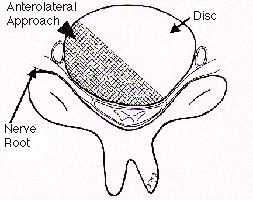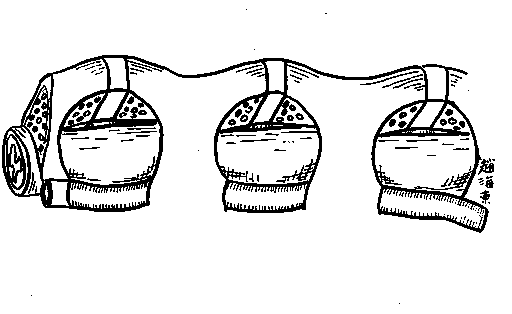Dr. Jho's Spinal Cord Decompression
via Anterior Foraminotomy for Spondylotic Cervical Stenosis or Ossified
Posterior Longitudinal Ligament (OPLL) : Minimally Invasive Cervical Stenosis
surgery - Neck Surgery
Home: Dr. Jho's Innovative Minimally Invasive Neurosurgery for Spine and Brain Disorders
Facts About
This Surgery
Discussion
Patients who have narrowed spinal cord canals in the neck region often suffer from numbness, weakness, pain in the arms, difficulty controlling urination and possibly difficulty with walking. Compared to conventional procedures which may lack in providing access to the front portion of the canal (laminectomy technique), or may require excessive bone removal and fusion (anterior discectomy or vertebrectomy technique), this new minimally invasive technique does not significantly weaken the structures of the cervical spine but still accomplishes enlargement of the canal. In simple terms, it cleans out a spinal cord canal that has bone build-up putting pressure on the spinal cord, so that the canal may then be likened to a water pipe without accumulated inner debris. It does so by the use of small holes, made with the use of the operating microscope or an endoscope, and are called foraminotomy holes. Another useful analogy that helps explain this procedure would be to picture removing the contents of a watermelon through a hole without cutting the watermelon apart. Once the surgery is done, patients can usually go home the following day without collars or braces. Recovery usually covers the time span of 4 to 6 weeks.
Definitions
foraminotomy - enlargement of an opening or passageway for a nerve
stenosis - a narrowing of a canal
spondylotic - refers to spondylosis which is a non-inflammatory disease of the spine that can include excess bone growth
Images


Left, axial view, and right, lateral view: Schematic drawings demonstrate decompression of the spinal cord through a small hole - the anterior microforaminotomy - leaving the majority of the cervical disc intact.

A schematic drawing demonstrates multilevel decompression via multiple foraminotomy holes.


MR scans, sagittal view, demonstrate cervical stenosis at C3-4, C4-5, C5-6 preoperatively (left) and subsequent excellent decompression of the spinal cord postoperatively (right). In this technique, bone graft fusion is not necessary and not used.


A preoperative axial view MRI reveals severe spinal cord compression by a spondylotic bony spur (left). A postoperative CT scan, axial view, shows an adequately widened spinal cord canal and decompressed spinal cord (right).


A postoperative CT reconstruction depicts spinal canal decompression (left). Three foraminotomy holes (arrows) are demonstrated in this oblique reconstruction (right).


Intraoperative photographs showing spinal cord as seen through foraminotomy holes during surgical decompression.
References
Jho, HD: Decompression via microsurgical anterior foraminotomy for cervical spondylotic myelopathy. Journal of Neurosurgery 86:121-126, 1997
Jho, HD: Spinal cord decompression via microsurgical anterior foraminotomy for spondylotic cervical myelopathy. Minimally Invasive Neurosurgery 40:124-129,1997
Jho, HD: Treatment of spondylotic cervical myelopathy via anterior foraminotomy. In Camins MB (guest ed), Loftus CM, Batjer HH (eds), Cervical Spinal Stenosis, Techniques in Neurosurgery, Lippincott-Raven (in press)